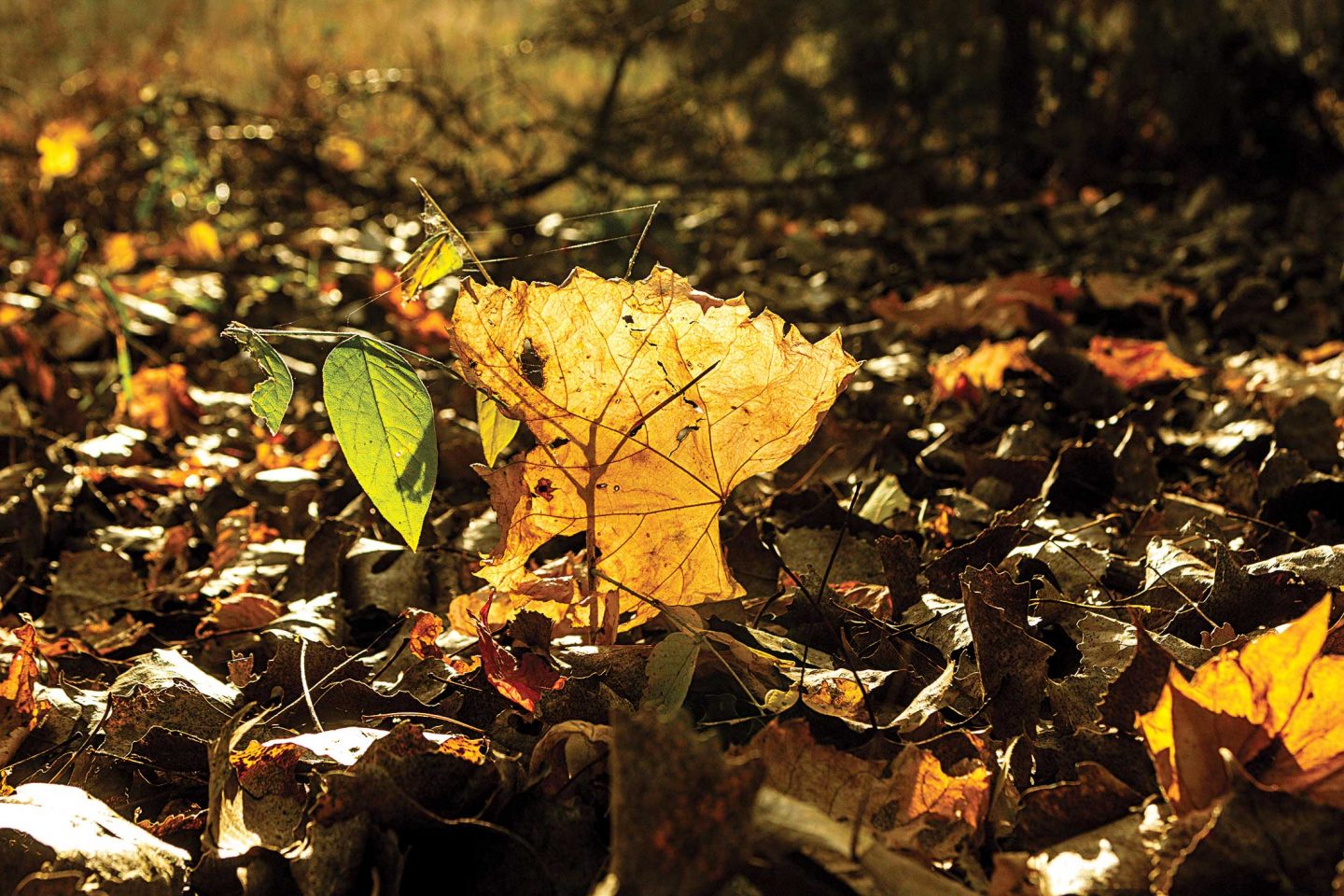
By Julie Geiser
Many people like the idea of a tidy lawn and quickly landscape after trees have dropped their brightly colored leaves or plants and flowers have wilted away for the season. It may look nice to have everything picked up, but for small creatures that live around your property, those piles of leaves, dead plant material, twigs and stems help keep them alive over the winter months.
Even the pickiest gardeners might want to change their gardening habits.
Food and Protection
Many butterflies and moths overwinter in our landscapes as an egg, caterpillar, chrysalis or adult. They bury themselves in leaf litter for protection from cold and predators.
Numerous species also disguise their cocoons and chrysalises to resemble dried leaves, blending in with the natural leaves around them and keeping them safe from would-be predators.
Bumble bees rely on leaf litter for protection as well. Queen bumble bees burrow into the ground only an inch or 2 to hibernate for winter. Leaf litter adds a thick layer of insulated protection from harsh winter weather.
Other species live in leaves as well, such as spiders, snails, worms and beetles. All these insects are important food sources that squirrels, birds, turtles, toads and many other animals rely on for food in the spring. Earthworms and pill bugs also create healthy soil by eating decaying fall leaves.
Shredding
Some folks shred fall leaves for composting, but shredded leaves do not provide the same cover as whole leaves for insects. When mowing or shredding leaves, you may destroy eggs, caterpillars and chrysalises along with the leaves.
Leaves are free mulch; they provide valuable organic matter and help build healthy soil. They suppress weeds and retain moisture underneath them. In the fall, the brilliantly colored leaves provide decoration for landscapes. Leaves will also provide a layer of protection for all the perennial plants and flowers in your landscapes.
A Happy Medium
If you think about what wild or natural areas look like in the winter, they are not picked up or manicured. Grasses, flowers and other plants are allowed to grow seed heads that birds feed on in winter and early spring. However, most of us don’t want that messy look in our yards. So, how do we find that happy medium between satisfying our landscaping desires and helping to sustain wildlife populations?
Leaving the leaves doesn’t always mean ignoring them completely; they can be moved to places in your yard where they won’t kill grass but will still help wildlife. When possible, rake those leaves and put them into garden beds, around trees and other landscaping areas, or find a corner of your yard to pile them in along with small sticks.
Definitely don’t get rid of them completely.
